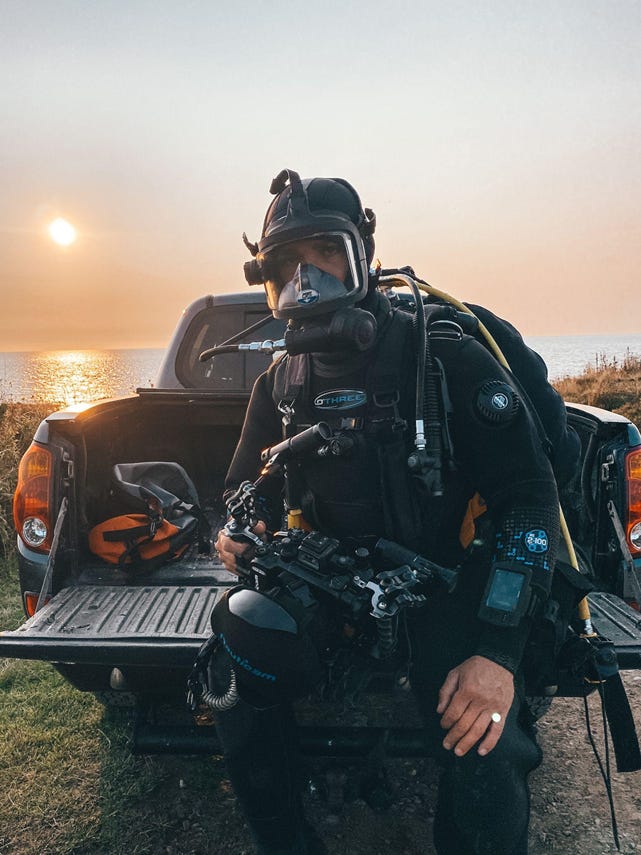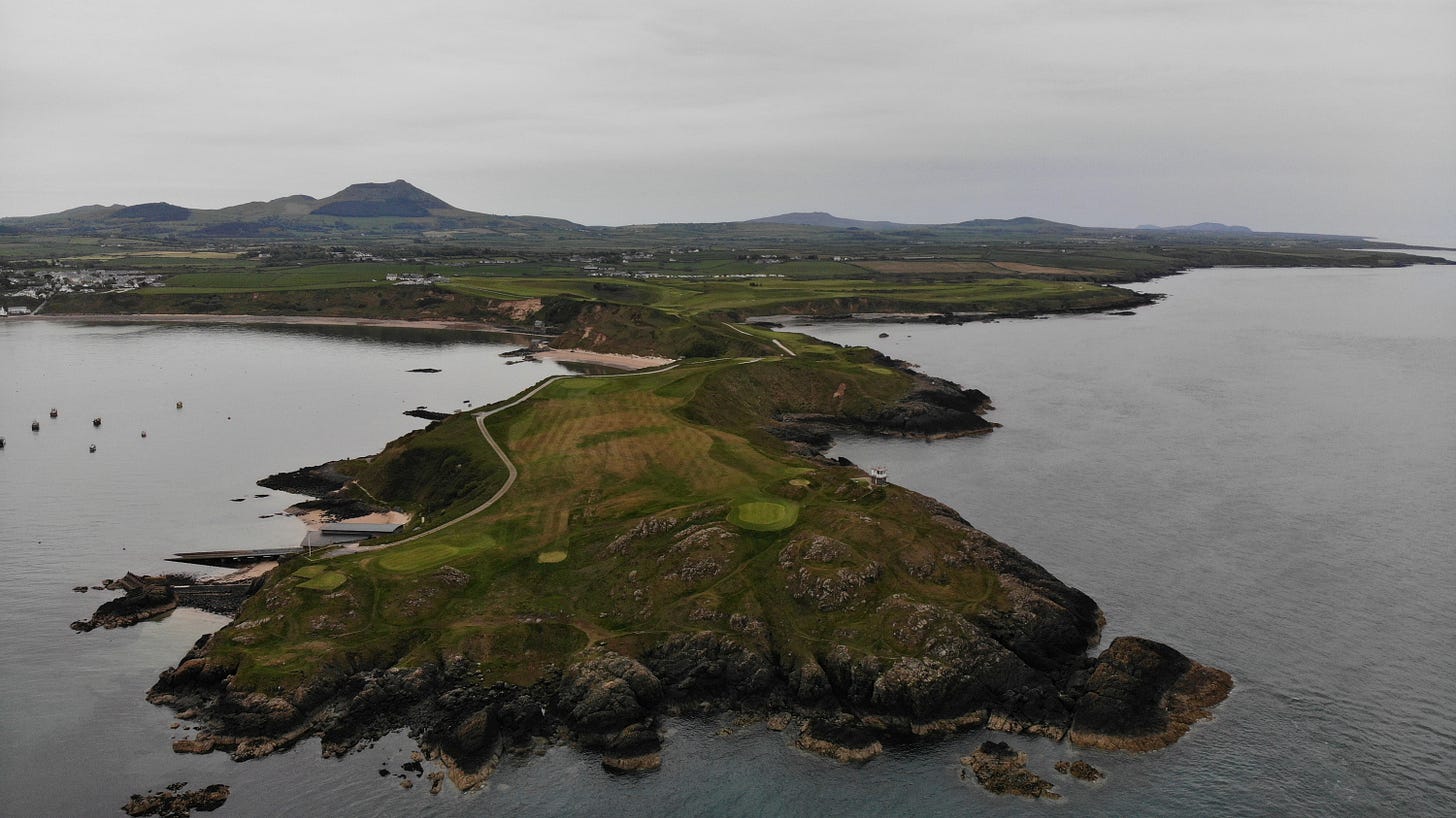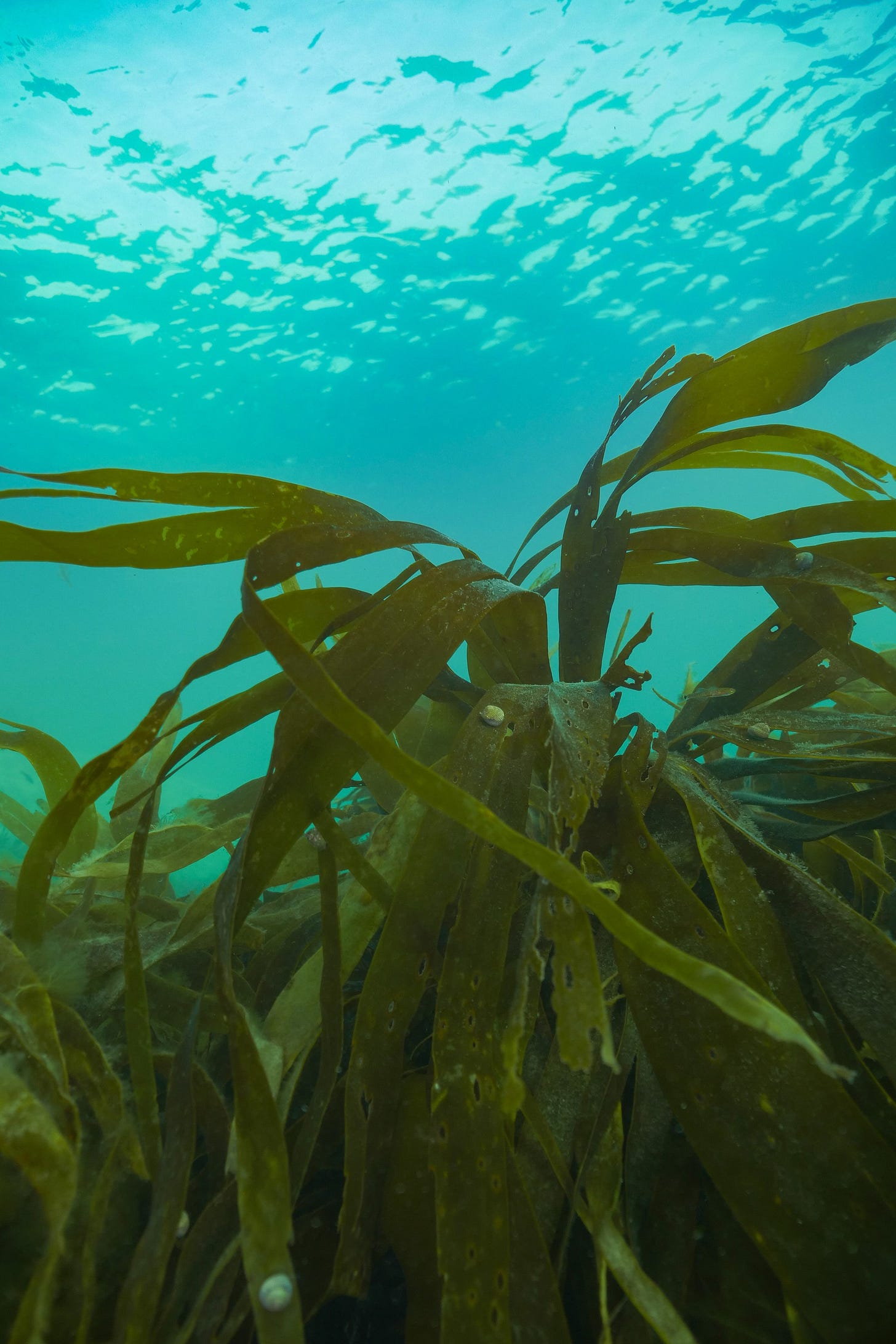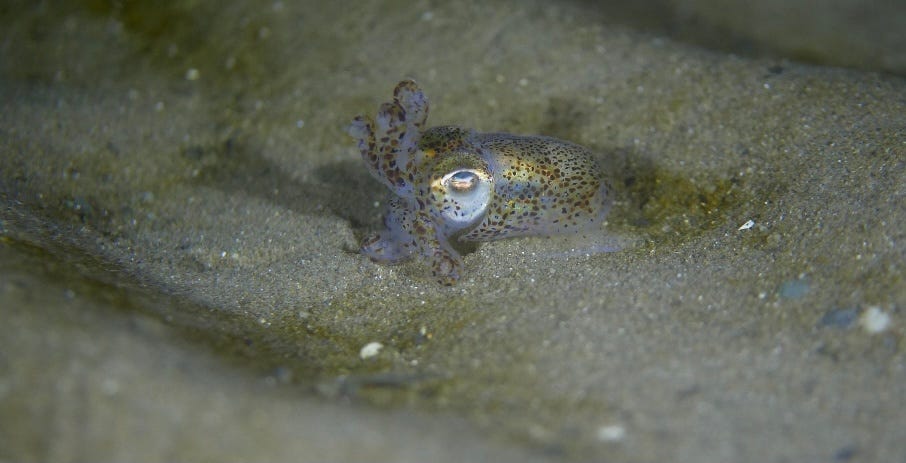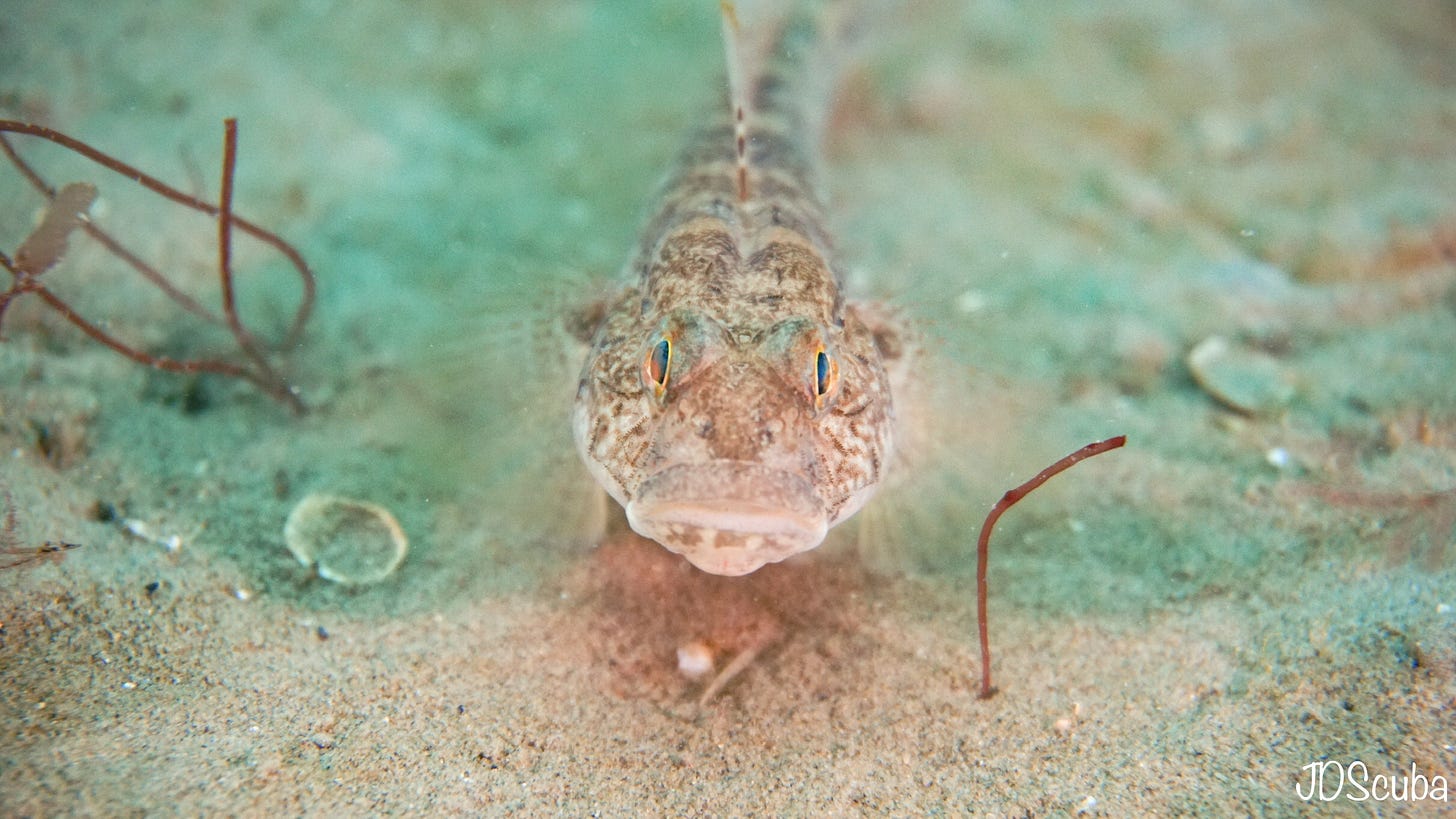Below the Waves: Diving in the UK's Temperate Waters
Temperate seas? Often considered cold, dark, and void of marine life. Think again.
These seas are home to a vast range of marine life. Growing up and learning to dive off the Welsh coast, many often ask whether there is much to see and worth all the heavy equipment and cold water. The answer to these questions is always yes, always worth it.
Diving Off the Welsh Coast
Kitted up in the usual diving gear for diving along the coast. Full face is only used for extra comfort but during the winter does provide extra warmth. Photo credit: Jake Davies
The Welsh coast isn't the first location that comes to mind when considering scuba diving in the UK. But the 1370-mile coastline certainly offers some incredible diving.
With much of the water along the Welsh coast being shallow, there is a range of opportunities from shore diving to offshore sites. You can even explore some of the shipwrecks linked to the rich maritime history along the coast.
There are numerous well-known and popular sites found all along the coast, each providing plenty of habitats and species for shore diving. Still, you never know what could make an appearance.
Llŷn Peninsula:
Porthdinllaen headland on the North coast of the Llŷn Peninsula. Photo credit - Jake Davies
Being based on the Llŷn Peninsula in Northwest Wales means I'm fortunate enough to live near some incredibly diverse dive sites along the North Wales coast. At the same time, it only takes a short drive to access the South Wales coast.
The North coast and the South of the Peninsula vary considerably. The peninsula’s north coast is rugged, slightly colder, and stronger currents make it great for drift diving when diving from a boat. Shore diving along this coast is primarily done in sheltered bays such as Porth Ysgaden or Porthdinllaen.
Porth Ysgaden is one of the most popular for diving as it's a small shallow bay with easy access. Plus, it is teeming with marine life. Divers particularly seek the colourful wrasse species hidden amongst the kelp.
Kelp frosts are great habitats to explore, with fish weaving through and a range of invertebrates found around the base. Photo credit: Jake Davies
Porthdinllaen is less accessible for diving as you have to get access across the golf course. However, this can be more accessible with lighter freediving gear or a boat.
It's all worth it since the Porthdinllaen bay is home to one of the most important marine habitats, the Seagrass meadow. This meadow of eelgrass (Zostera marina) is one of the largest and densest off the Welsh coast. Exploring these meadows is incredible since they're unlike any other marine habitat off the coast.
On the other hand, the South coast is much shallower, where sites such as Criccieth, Pwllheli, and Abersoch are primarily sandy with little algae. Many of the species found here are ambush and are well hidden in these habitats, making the sites look more barren.
Pembrokeshire
Taking a drive along the scenic coastline South you'll end up in Pembrokeshire, home to some of the best diving along the Welsh coast. You'll find the deepest Welsh shore dive here, Martins Haven. Situated within the Skomer Marine Nature Reserve, the wall and reef slope down to 25 meters and below.
However, heading too far out isn't recommended as it's not far from the infamous Jack Sound, which has powerful currents. Nevertheless, the site is popular both for its depth and being situated within a protected area. Thanks to this protection, it's full of marine life. You even can see a pink sea fan (Eunicella verrucosa) at its most northern limit at this site.
Another great shore dive is St Brides Bay. Again, this is a shallow sheltered bay with a short walk for entry. However, this site is different from the rest, with a primarily gravel seafloor. Many dive this site at night as it's a popular site to search the small and charismatic bobtail squid (Sepiola atlantica).
The small and charismatic bobtail squid resting on the sand. Photo credit: Jake Davies
To discover just a few of these dive sites, as a dive media team of three underwater videographers, we created an online Welsh bilingual series called 'Wales Best of The West.' The series showcases our favourite sites and how important they are for a diverse range of habitats and species that make them unique to dive.
The trailer is available online, and the series will be released in early 2023. You can check it out here at Wales Best of the West / Cymru Gorau'r Gorllewin Trailer.
Training and Equipment
Diving in the temperate waters does involve a lot more kit than that of tropical waters, where rash vests and shorts are acceptable. However, more kit does mean more weight which does put people off as dive kit is often already heavy.
Drysuits are recommended throughout the year. However, the water is warm enough in the summer, around 18 - 19 degrees in some locations, for a 7mm semi-dry wetsuit. But when it comes to deeper dives, the temperature drops, and a dry suit is required.
For drysuits, neoprene, especially crushed neoprene, is a good option. It provides additional thermal protection and is more maneuverable than standard neoprene. However, if you don't like the restrictive feeling, a laminate or membrane would be more appropriate, though you lose the added thermal protection provided by neoprene.
Along with a drysuit, gloves and a hood are recommended. For warmer days, a thickness of 3mm is sufficient. However, when diving during the winter or early in the season a 5 -7mm is a better choice.
Another vital bit of equipment is a dive torch. A powerful torch will reveal the stunning colours found below the waves, especially on the deeper reefs that light struggles to penetrate to. A torch is also an essential piece of safety equipment. It helps keep your buddy in sight during deeper and darker dives.
The ‘Wild and Temperate Seas’ of Wales
Staring down the lens, black gobies are commonly found when diving on sand. Photo credit - Jake Davies
There's more to diving temperate seas than many think. There's a massive range of diversity and history that can be explored. This article merely touches on a few accessible examples of great diving locations off the Welsh Coast.
To explore more temperate dives in Wales or further afield around England and Scotland, check out the 'Wild and Temperate Seas.’


